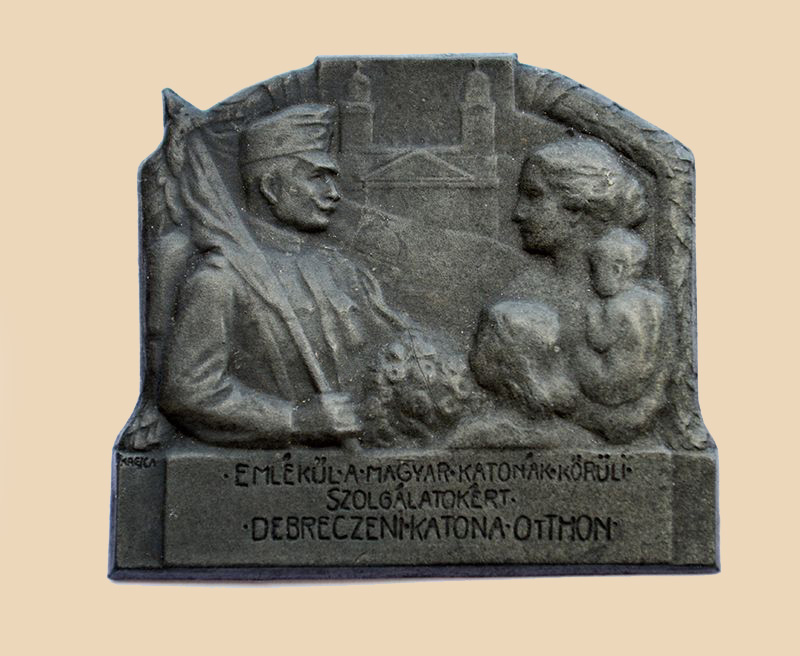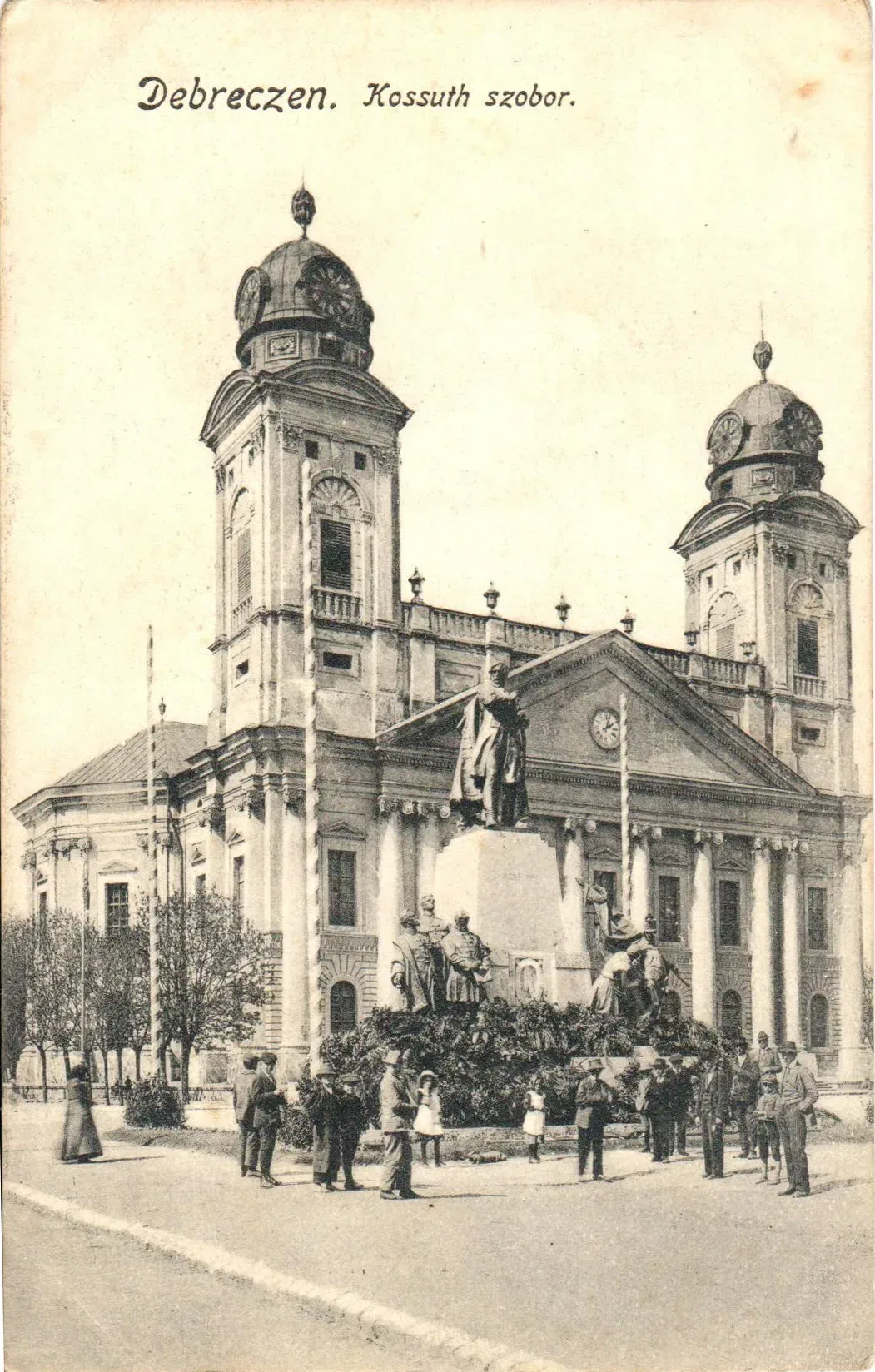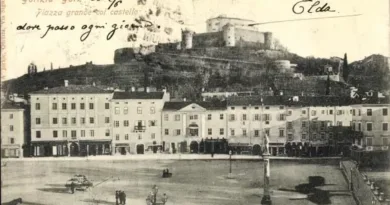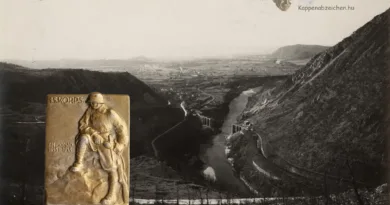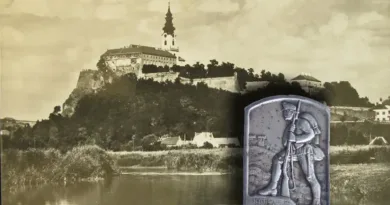Debrecen
Lajos Kossuth called Debrecen the “guard post of freedom”, and this name is reflected in many ways on the badges of the 3rd Honvéd Infantry Regiment. The central motif of the three versions of the badge is Kossuth Square, which is the main square of the city. On the north side of the square stands the Calvinist Great Church of Debrecen. The town has also been called „the Calvinist Rome”. This classicist building was the seat of the Preliminary Government of Hungary on April 14, 1849, when, under the leadership of Lajos Kossuth, the Declaration of Independence was issued and the dethronement of the House of Habsburg was declared. From that day Hungary was a republic until the Habsburgs and their Russian allies strangled it in August 1849. In front of the church stands the monument of Lajos Kossuth, which was unveiled in 1914, in the year of the outbreak of the Great War, in which the city’s two regiments, the 39th K.u.K and 3rd Honvéd Infantry Regiments, made huge blood sacrifices for the name of the same ruler who was denied by their ancestors. Arkanzas’s winged altar-like badge shows the most accurate image, which perfectly corresponds to the depiction of the postcard shown here. The other two badges are more stylized.
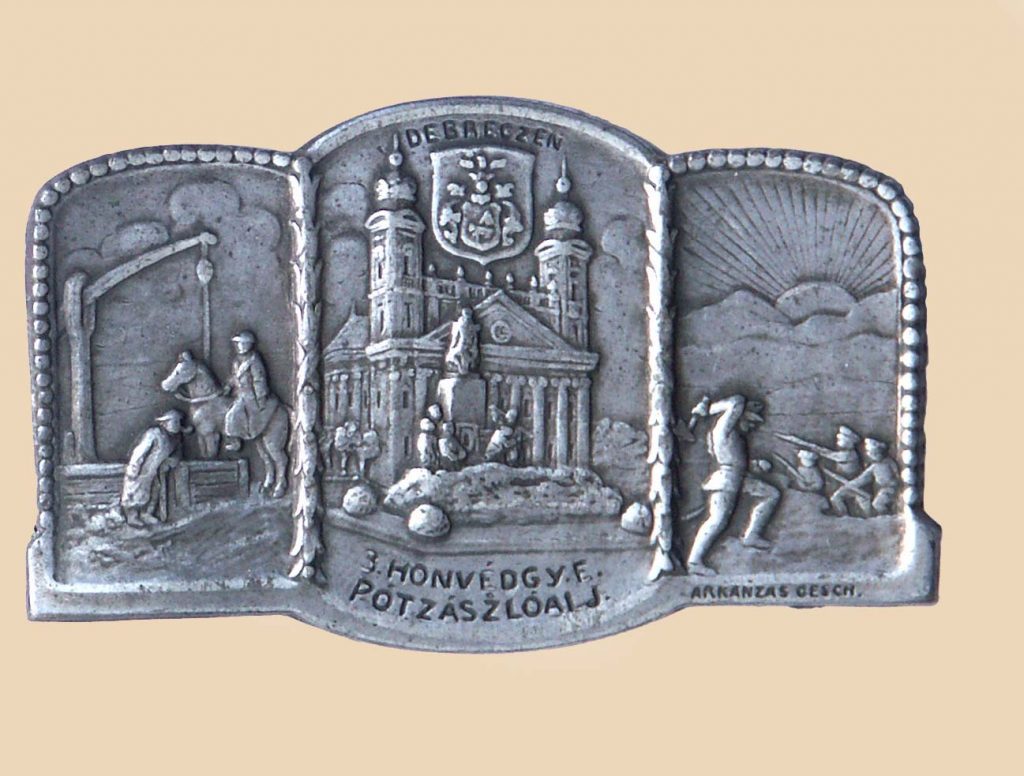
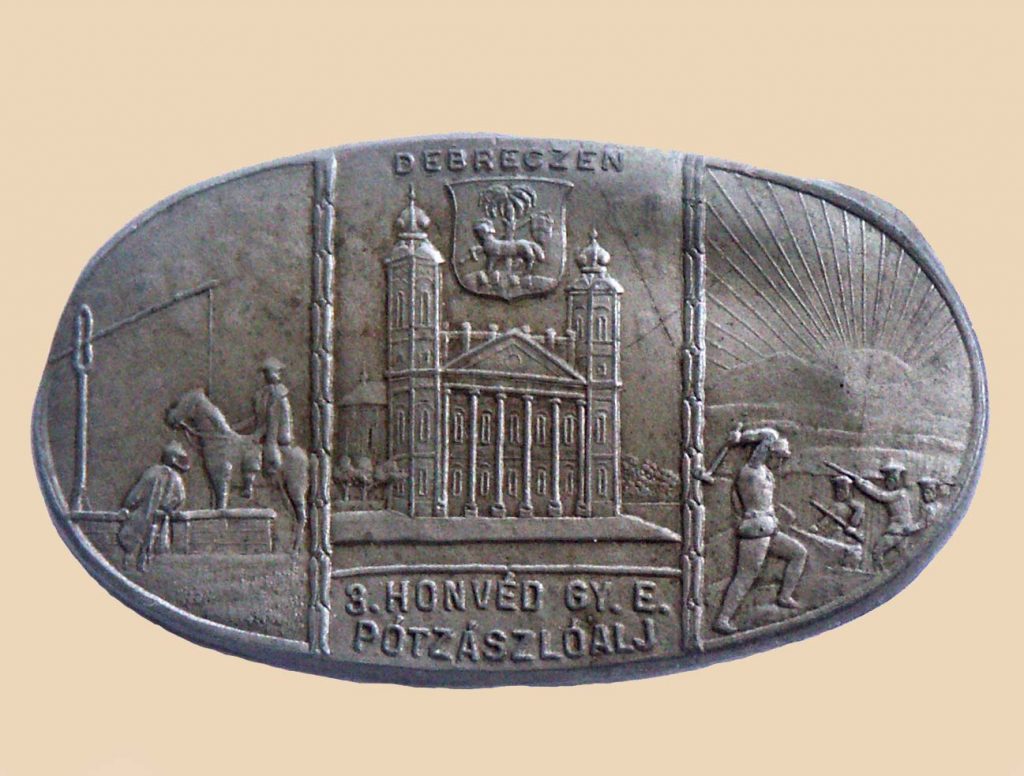
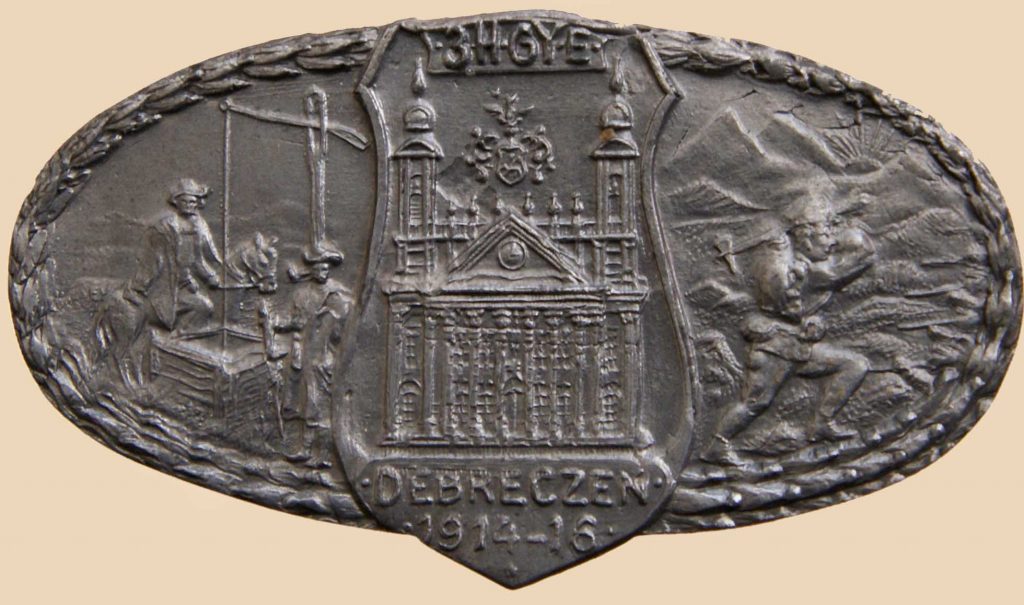
There is a fourth badge too that depicts the Calvinist Great Church. This was used by the Soldiers’ Home in Debrecen. It was a sanitary institution for those military personnel who lived in the town for some reason (mostly injured soldiers treated there). The home offered entertainment, a library, refreshment drinks and organized social events. I do not know if the badge was received by the guests or the organizers. Maybe both could purchase it, as was usually the case with most of the Kappenabzeichen. The script reads: “In commemoration of the work carried out for the Hungarian soldiers. Debrecen Soldier’s Home”.
